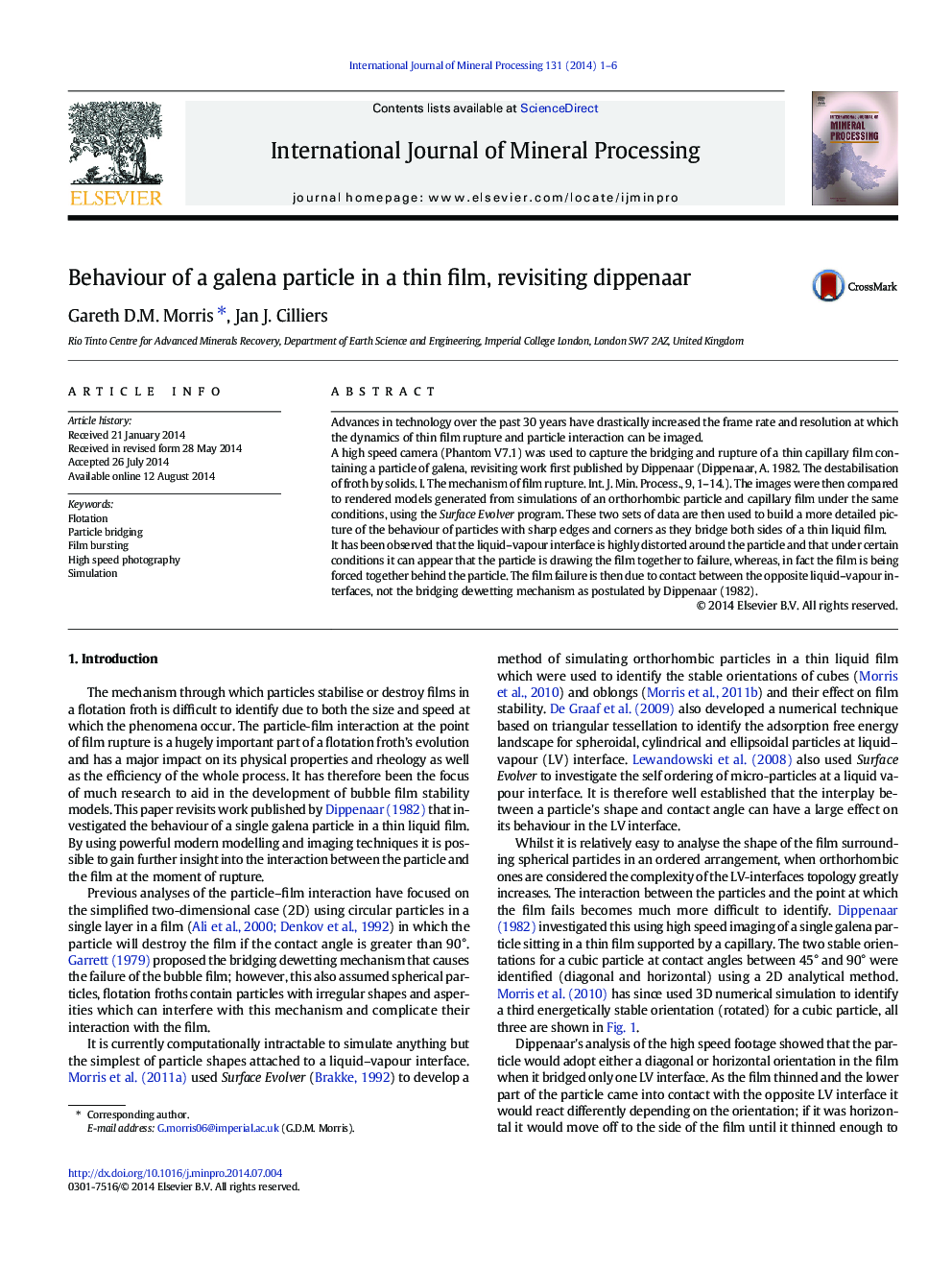| Article ID | Journal | Published Year | Pages | File Type |
|---|---|---|---|---|
| 213953 | International Journal of Mineral Processing | 2014 | 6 Pages |
•We revisit work by Dippenaar, first published in 1982.•We compare high speed footage and models of a particle in a thin liquid film.•Simulations show that there is a highly distorted film shape near the particle.•High speed footage was used to measure the speed of the bursting film.•Bursting does not occur at the particle surface.
Advances in technology over the past 30 years have drastically increased the frame rate and resolution at which the dynamics of thin film rupture and particle interaction can be imaged.A high speed camera (Phantom V7.1) was used to capture the bridging and rupture of a thin capillary film containing a particle of galena, revisiting work first published by Dippenaar (Dippenaar, A. 1982. The destabilisation of froth by solids. I. The mechanism of film rupture. Int. J. Min. Process., 9, 1–14.). The images were then compared to rendered models generated from simulations of an orthorhombic particle and capillary film under the same conditions, using the Surface Evolver program. These two sets of data are then used to build a more detailed picture of the behaviour of particles with sharp edges and corners as they bridge both sides of a thin liquid film.It has been observed that the liquid–vapour interface is highly distorted around the particle and that under certain conditions it can appear that the particle is drawing the film together to failure, whereas, in fact the film is being forced together behind the particle. The film failure is then due to contact between the opposite liquid–vapour interfaces, not the bridging dewetting mechanism as postulated by Dippenaar (1982).
Graphical abstractFigure optionsDownload full-size imageDownload as PowerPoint slide
